The exotic Moroccan city where tomorrow never comes
Old cafes and cheap apartments were a magnet for creative expats and the decayed aristocrats of Europe and America. Long after they left, it still thrums with their creative energy.
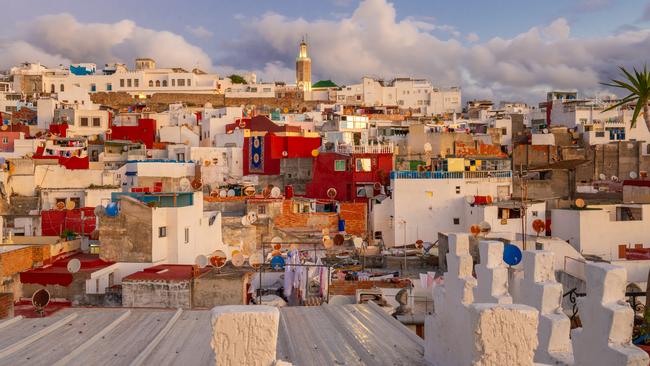
Tangier throbbed with “the heartbeat of the world”, wrote Beat Generation novelist William S. Burroughs, author of the nightmarish work Naked Lunch. During his years there in the mid-1950s, Tangier, at the northernmost tip of Morocco, was an International Zone, an almost autonomous enclave where the conservative mores of Europe and elsewhere were observed outrageously in the breach.
The city’s old cafes and cheap apartments had long been a magnet for creative expats and its Mediterranean climate and Moorish exoticism attracted a cohort that another “Beat” writer, Jack Kerouac, called “the decayed aristocrats of Europe and America”. That was then and this is now. The International Zone existed from 1925 to 1956. Sunny, prosperous Tangier 2024 doesn’t need to trade endlessly on tales of louche dudes and slumming heiresses in “the Interzone” (as Burroughs called the place). But the rollcall of creative renegades still intrigues, from Samuel Pepys and Mark Twain to Orwell, Capote, Ginsberg, Sontag and Highsmith.
Henri Matisse’s hotel room has whip-fast wi-fi. His old abode, room 35 at the historic Grand Hotel Villa de France, has enjoyed a modest upgrade since the celebrated French painter lodged there in 1912 and 1913. I’m occupying the small, comfortable suite for a couple of nights and look out past the sugar-cube jumble of Tangier’s medina market to the kasbah’s crowning fortress. The view hasn’t changed greatly from the one Matisse captured in the blue-drenched vision of his painting, Window at Tangier. I head to the lobby for a cocktail at Henri’s namesake bar. It’s closed. “When does the Matisse Bar open?” I ask the fez-hatted concierge. “Tomorrow,” he says, “Insha’allah – God willing.”
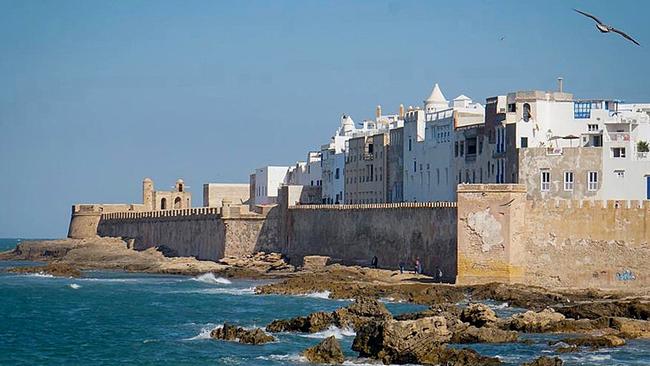
Tomorrow, as they say, never comes. I settle for a beer at the sports bar.
Modern Tangier is a city of 1.3 million but at its heart, for visitors and citizens – known as Tanjawis or Tangerines – is the old kasbah and, below its ramparts, the whitewashed maze of the medina. I spend an hour lost in the latter, looking for the tomb of the great Tangier-born traveller Ibn Battuta (1304-1369) whose 29-year odyssey across Arabia, Africa, India and Asia makes other travellers, including Marco Polo, look like stay-at-homes. Threading the intestinal tangle of alleyways, where balconies lean in close enough to swap gossip, I reach the ornamental doorway that supposedly contains Battuta’s tomb. It, too, is closed. “The keeper must be at prayer. Back soon,” says a neighbour. “Soon”, too, never comes. No problem. I’ve paid ritual homage to the epic wanderer with my own lost-and-found version. Later I read that he doesn’t rest there anyhow, but probably 300km away beneath Casablanca.
I meet up with 81-year-old Tangier-born guide and raconteur Morad Chatt, courtesy of Sydney-based Morocco specialists By Prior Arrangement Travel. His own freewheeling travels when young included distant Australia and even working in the Port Kembla steel mills. “Travel was much easier back then,” he recalls, hinting at the later constraints and suspicions that have changed travel forever.
We start at the hilltop kasbah, a stone bastion that looms over the town and harbour. From here, gravity draws us down toward the snakes-and-ladders alleys of the medina. Along cumin-scented lanes, Morad points out souk stalls that trade everything from gold, silk and caftans to this morning’s sea-catch and SIM cards. Add nougat and dates, djellabas and Levis. We come to a unique, basement room where a communal baker, stoking his underground oven, cooks the home-prepared meals and loaves brought in by locals.
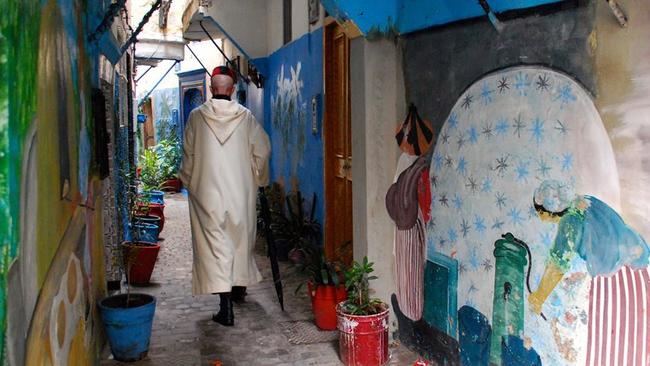
“Between a cafe and a cafe, there is another cafe,” goes the Moroccan quip. Tangier’s establishments embody the tradition, serving endless tumblers of steaming Mahgreb mint tea or cups of nuss-nuss (half-half) cafe au lait. I linger over a tea, reading and people-watching at the 1920 Gran Cafe de Paris, a thriving Art Deco coffee palace fronting Plaza de France. One of the town’s legends, there has been little change to its panelled decor and leather banquettes since French colonial times. Tea-drinkers at tables along its streetfront spend an hour or whole afternoon surveying the endless paseo of tourists, Tangerines and boulevardiers.
Cafes like the Gran, Hafa and Central were hang-outs for the expats, the most enduring of whom was American Paul Bowles. Music composer and author of the novel The Sheltering Sky, he settled in Tangier in 1947 and stayed on for 52 years. As an aficionado of kif hashish, he knew well Cafe Baba, a remarkable teahouse that has perched on the medina hillside for 80 years. “Cafe Baba is your home,” says the glassy-eyed waiter who welcomes me. The decor is scuffed, old-school bohemian cool, but with terrace views across the roofs to the Strait of Gibraltar. Its walls boast photos of an anomalous parade of visitors. Chef Anthony Bourdain clearly lingered long here, while former UN secretary-general Kofi Annan and the Swedish royal family probably didn’t, given that something in the Baba air usually bears the tang of cannabis.
One photo stands out, a fading 1966 shot of his dishevelled eminence, Rolling Stones guitarist Keith Richards, on the terrace. Never one to do excess by halves, he dangles a lit cigarette in one hand while drawing on a long thin hash pipe held in the other. Keef on kif, so to speak. Having been introduced to the Stones, the natty, conservative Bowles, who was no great fan of rock music, drolly dismissed them as “very much rolling (in money) and very stoned”.
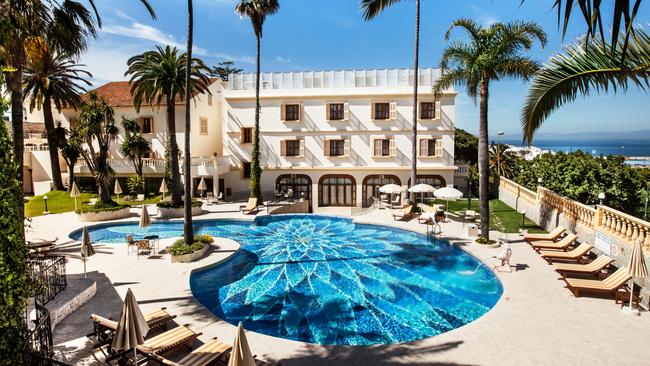
Several celebrated Australians also washed up on the Interzone’s notorious shores and dabbled in its circular economy (if not mad alchemy) of inspiration, indulgence and sporadic creativity. Tasmanian-born Hollywood hellraiser Erroll Flynn sailed into Tangier aboard his yacht in 1954. Commandeering a stool at the tiny Navarra Bar, he swigged bourbon and told yarns about his escapades. He later committed his tales to an aptly titled autobiography, My Wicked, Wicked Ways. The book outlived Flynn who, perhaps courtesy of those “ways”, expired soon after at age 50.
Painter Brett Whiteley spent two months in Tangier in 1967. He produced no major works but a series of gouaches and drawings known as The Tangier Postcards, including a hallucinatory portrait of an Arab hashish dealer, complete with glass “evil eye”. Whiteley, who used words almost as vividly as he painted, wrote of dining on Moroccan spices “that drill the tongue to the ankles”. Veteran Australian rocker Billy Thorpe was so inspired by Tangier that in 2006 he recorded an ambitious concept album with the Moroccan Symphony Orchestra. He died unexpectedly in Sydney in 2007 but the final touches to his work, Tangiers, were completed in the studio, with the album released in 2010.
Reluctantly departing my modest “suite Matisse”, I head uphill and upmarket to the newest star of Tangier accommodation, Villa Mabrouka, a 1940s Andalusian-style mansion previously owned by a Kuwaiti princess and then French couturier Yves Saint Laurent. Acquired in 2019 by renowned British designer Jasper Conran, the estate’s 12 impeccably renovated suites and villas eschew Orientalist kitsch (“pseudo-soukdom”, as one writer quipped) and have retained the property’s original Moorish-Iberian elegance. The view, from Africa to Spain, is extraordinary. As are the gardens and dining experience.
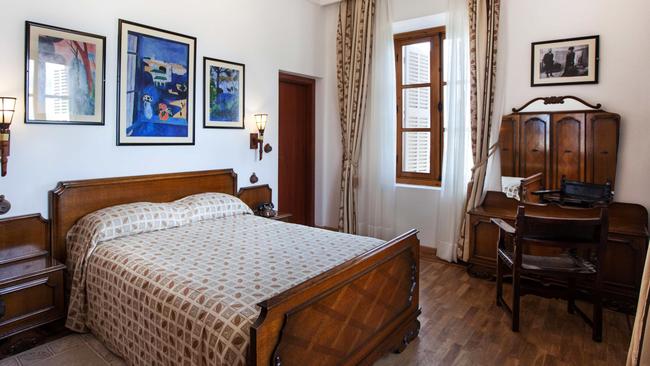
Tangier accommodation that has survived from the decadent International Zone days ranges from the heritage-listed, harbourfront Continental Hotel and mid-town El Minzah (a favourite of James Bond creator Ian Fleming) to the shady El Muniria. As the former abode of Beat authors such as Burroughs and Kerouac, the three-storey, crenellated Muniria was the grim incubator of novels such as the former’s Naked Lunch and the latter’s Desolation Angels. For good reason, Kerouac dubbed it Villa Delirium.
Bowles lived in Tangier until his death in 1999 and knew the city across the span of its identities, from ebullient, bizarre Interzone to Morocco’s romantic “Bride of the North”. He loved the feeling, as he said, “of being in a pocket of suspended time and animation”.
Whether seeing the town from Matisse’s old window or amid the blue-white walls of the medina, or while rambling half-lost in the kasbah, that feeling for me, a passing visitor, is still vividly there. Tangier of the 21st century is not the laissez-faire zone of the Beats or later decades. It is much more, but the echoes of something remain. As Bowles wrote, “Tangier is like a gong that rang years ago. I still hear the resonance.”
In the know
Sydney-based Morocco specialist By Prior Arrangement Travel offers bespoke itineraries with expert local guides. Villa Mabrouka has rooms from $725.
Grand Hotel Villa de France has rooms
from about $285 on booking sites or via email reservation.ghvdf@leroyal.com
Recommended reading
The Dream at the End of the World: Paul Bowles and the Literary Renegades in Tangier by Michelle Green; Tangier, A Literary Guide for Travellers by Josh Shoemake.
John Borthwick was a guest of By Prior Arrangement Travel.
If you love to travel, sign up to our free weekly Travel + Luxury newsletter here.


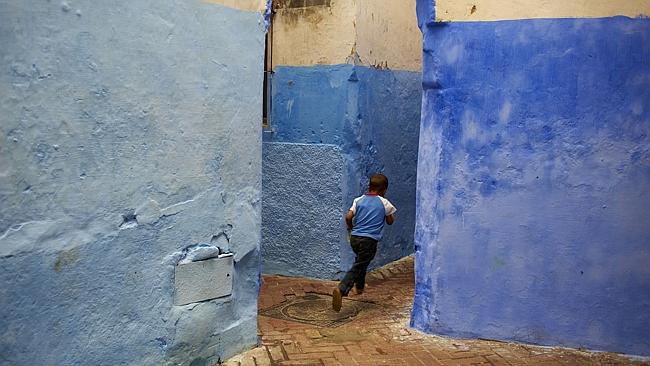
To join the conversation, please log in. Don't have an account? Register
Join the conversation, you are commenting as Logout